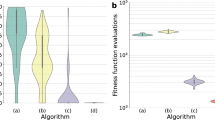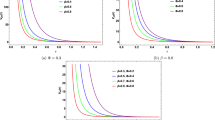Abstract
THE path of a material particle of mass m moving in a conservative field of force in which the potential energy V is a function of position (x, y, z) only is determined by Hamilton's Principle. If E is the constant total energy and A and B the points of departure and arrival, this may be expressed in the form
This is a preview of subscription content, access via your institution
Access options
Subscribe to this journal
Receive 51 print issues and online access
$199.00 per year
only $3.90 per issue
Buy this article
- Purchase on SpringerLink
- Instant access to full article PDF
Prices may be subject to local taxes which are calculated during checkout
Similar content being viewed by others
References
Based on lectures delivered by Prof. Erwin Schrodinger at the Koyal Institution of Great Britain on Mar. 5, 7, 12, and 14.
Cf. A. S. Eddington, NATURE, July 23, 1927, p. 117.
Cf. H. A. Kramers, NATURE, May 10, 1924, p. 673.
Rights and permissions
About this article
Cite this article
MILNE-THOMSON, L. The Elements of Wave Mechanics1. Nature 121, 885–886 (1928). https://doi.org/10.1038/121885a0
Issue date:
DOI: https://doi.org/10.1038/121885a0



